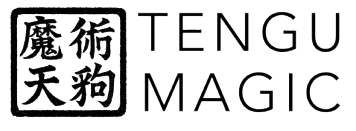The Tengu are among the most iconic and mysterious creatures in Japanese folklore. Often portrayed as half-human, half-bird beings with red faces, sharp noses or beaks, and feathered wings, the Tengu are yōkai—supernatural entities that live beyond the rules of the human world.
Feared as demons, honored as gods, and respected as fierce protectors of sacred land, Tengu walk the line between the divine and the monstrous. They are known as guardians of mountains and forests, skilled warriors, and spiritual beings that test human pride.
The name “Tengu” (天狗) literally means “Heavenly Dog,” though their appearance and behavior are more avian than canine. Their roots trace back to Chinese mythology, but over centuries they evolved into uniquely Japanese figures—complex, contradictory, and deeply symbolic.
⸻
The Two Faces of the Tengu: Karasu and Yamabushi
There are two main types of Tengu in Japanese mythology:
1. Karasu Tengu (烏天狗) – The “Crow Tengu” have long beaks, black wings, and clawed feet. They resemble giant humanoid crows and are associated with wildness, flight, and battle. These are the older, more animalistic versions of the Tengu—untamed and unpredictable.
2. Yamabushi Tengu (山伏天狗) – These appear more human, often depicted as red-faced monks with long noses, wearing the robes and gear of mountain ascetics (yamabushi). They’re considered wiser, more spiritual, and more disciplined—though still proud and powerful.
Over time, Tengu evolved from purely malevolent spirits into mischievous yet wise guardians of the natural world.
⸻
Origins: From Chinese Demons to Japanese Guardians
The earliest appearance of a Tengu-like creature in Japanese texts is in the 8th-century chronicle Nihon Shoki. Initially, Tengu were seen as bad omens—flaming stars that fell from the sky or noisy spirits that disrupted the peace.
These early Tengu were imported from Chinese Tiangou (Heavenly Dog) legends, where the creature devoured suns and moons during eclipses. But Japanese imagination reshaped the Tengu over centuries. By the medieval period, they had become entrenched in native belief systems—linked with mountain spirits, wandering monks, and the ascetic practices of Shugendō.
⸻
Tengu and the Mountains: Sacred Space and Spiritual Trial
In Japanese spirituality, mountains are sacred. They are the dwelling places of kami (gods or spirits) and places of pilgrimage, meditation, and rebirth. Tengu are considered the guardians of these remote, holy places.
They challenge those who enter carelessly or arrogantly—especially monks, samurai, or hunters. In some stories, Tengu mislead travelers with illusions. In others, they attack or kidnap the unworthy. But for the pure-hearted or humble, Tengu may serve as teachers, revealing spiritual truths through trials.
This role as both tester and teacher places the Tengu in a powerful symbolic position: they are the keepers of spiritual thresholds.
⸻
Tengu and Martial Arts
Tengu are also famous for their martial skill. Many legends speak of warriors being abducted or trained by Tengu in secret mountain dojos. The legendary swordsman Minamoto no Yoshitsune, one of Japan’s greatest military figures, is said to have learned his swordsmanship from the king of the Tengu on Mount Kurama.
Because of this, Tengu are sometimes revered as patrons of martial artists, and their imagery is used in training halls and on weapons to symbolize mastery, speed, and mystical power.
⸻
Symbols and Rituals: Tengu in Art and Culture
Tengu are often depicted with fans made of feathers (hauchiwa), which they use to stir wind or create illusions. They also carry swords and wear the tokin (the small black cap worn by yamabushi monks).
In Japanese festivals, Tengu masks are commonly worn in parades and processions. These masks, especially the long-nosed red variety, represent strength, wildness, and transformation. They’re both feared and respected—and are often used to ward off evil or bless local communities.
In some shrines, small wooden Tengu figures are offered as talismans for protection and courage.
⸻
Modern Legacy of the Tengu
Today, the Tengu still holds a strong place in Japanese culture. They appear in literature, anime, manga, and video games as powerful characters—sometimes monstrous, sometimes wise. They’ve been reimagined as protectors, anti-heroes, or symbols of rebellion against conformity.
But their core symbolism remains:
• Pride that leads to downfall
• Humility that leads to transformation
• Wildness that must be respected
The Tengu reminds us that not all power is meant to be tamed. Some spirits exist to keep us sharp, humble, and aware of forces greater than ourselves.
⸻
Conclusion: The Tengu as a Living Myth
Tengu are not just relics of the past—they are living myths, evolving with the culture that created them. They reflect the ever-present tension between civilization and nature, pride and humility, knowledge and chaos.
Whether as demon, teacher, or trickster, the Tengu challenges us to look beyond appearances, confront our inner shadows, and walk with deeper awareness—especially when we tread sacred ground.
